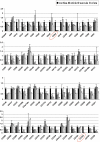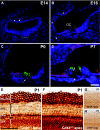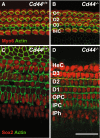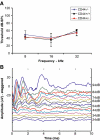CD44 is a marker for the outer pillar cells in the early postnatal mouse inner ear
- PMID: 20386946
- PMCID: PMC2914240
- DOI: 10.1007/s10162-010-0211-x
CD44 is a marker for the outer pillar cells in the early postnatal mouse inner ear
Abstract
Cluster of differentiation antigens (CD proteins) are classically used as immune cell markers. However, their expression within the inner ear is still largely undefined. In this study, we explored the possibility that specific CD proteins might be useful for defining inner ear cell populations. mRNA expression profiling of microdissected auditory and vestibular sensory epithelia revealed 107 CD genes as expressed in the early postnatal mouse inner ear. The expression of 68 CD genes was validated with real-time RT-PCR using RNA extracted from microdissected sensory epithelia of cochleae, utricles, saccules, and cristae of newborn mice. Specifically, CD44 was identified as preferentially expressed in the auditory sensory epithelium. Immunohistochemistry revealed that within the early postnatal organ of Corti, the expression of CD44 is restricted to outer pillar cells. In order to confirm and expand this finding, we characterized the expression of CD44 in two different strains of mice with loss- and gain-of-function mutations in Fgfr3 which encodes a receptor for FGF8 that is essential for pillar cell development. We found that the expression of CD44 is abolished from the immature pillar cells in homozygous Fgfr3 knockout mice. In contrast, both the outer pillar cells and the aberrant Deiters' cells in the Fgfr3 ( P244R/ ) (+) mice express CD44. The deafness phenotype segregating in DFNB51 families maps to a linkage interval that includes CD44. To study the potential role of CD44 in hearing, we characterized the auditory system of CD44 knockout mice and sequenced the entire open reading frame of CD44 of affected members of DFNB51 families. Our results suggest that CD44 does not underlie the deafness phenotype of the DFNB51 families. Finally, our study reveals multiple potential new cell type-specific markers in the mouse inner ear and identifies a new marker for outer pillar cells.
Figures






References
Publication types
MeSH terms
Substances
Grants and funding
LinkOut - more resources
Full Text Sources
Molecular Biology Databases
Miscellaneous

